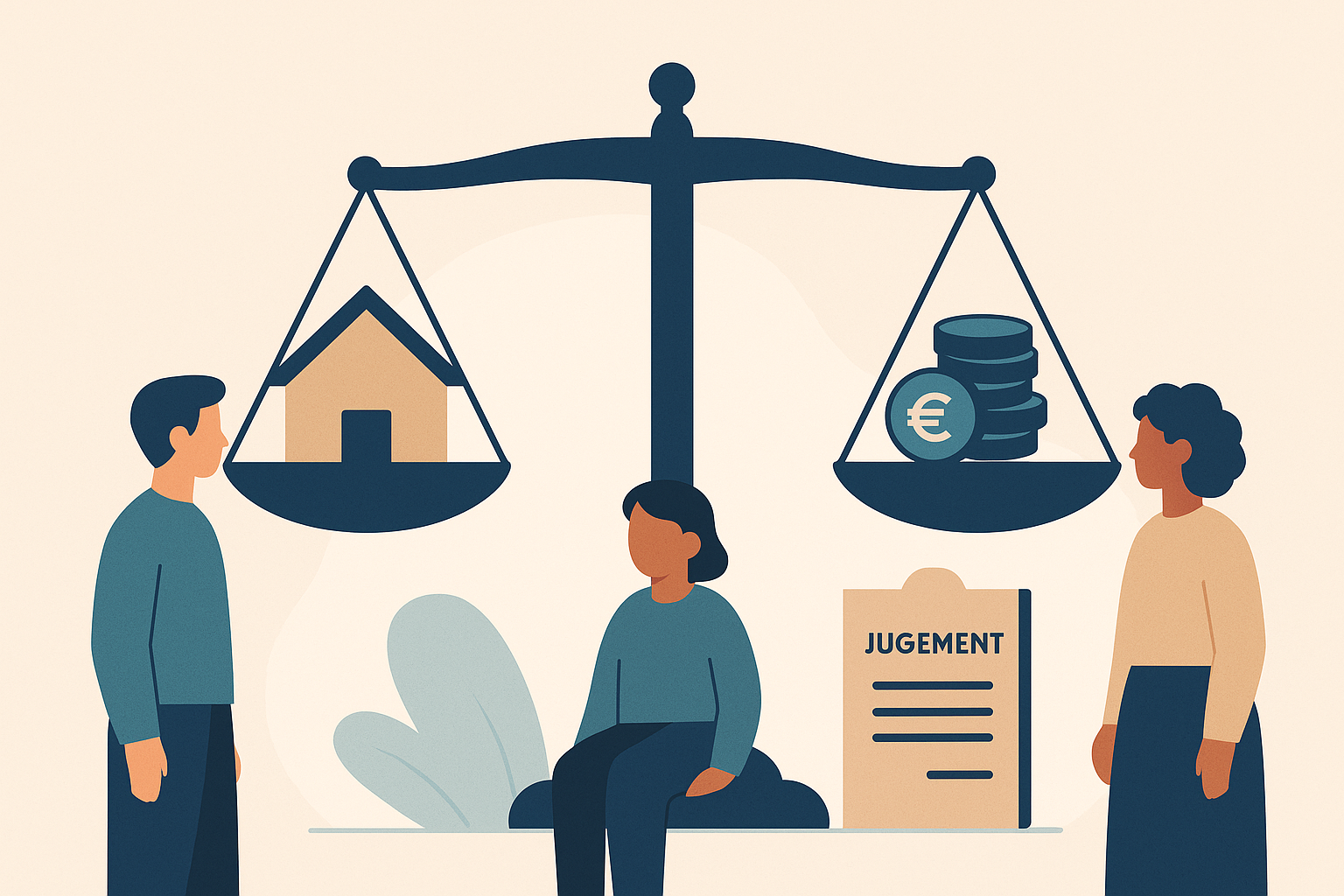The liquidation of co-ownership is a legal process that concerns many people in France, whether following an inheritance, a divorce, or the joint purchase of real estate.
This article provides a simple, step-by-step explanation of what co-ownership liquidation is, its guiding principles, and its consequences.
1. What Is Co-Ownership (Indivision)?
Co-ownership arises when several individuals hold rights over one or more assets, without their shares being physically divided.
In other words, each co-owner holds a proportionate share of the asset, but the property remains undivided and legally treated as a whole.
This situation is common:
-
-
- in an estate, among heirs,
- after a divorce, between former spouses,
- or between partners or friends who jointly purchased property.
-
2. Why End Co-Ownership?
Co-ownership is often a source of conflict and deadlock.
For this reason, French law provides that “no one can be forced to remain in co-ownership.”
Accordingly, any co-owner may request to end the arrangement at any time.
3. How to End Co-Ownership? The Steps of Liquidation
3.1 Principle of Partition
The most common way to end co-ownership is through partition.
This means dividing the shared property among the co-owners so that each becomes the sole owner of their portion.
3.2 Types of Partition
-
-
- Amicable partition: if all co-owners agree, they may proceed without court involvement.
- Judicial partition: in the event of disagreement, the matter may be brought before a court, which will make the decision.
-
3.3 Preliminary Liquidation
Before partition, liquidation must be carried out.
This involves preparing an inventory of assets, valuing the assets (property, accounts), liabilities (debts, expenses), calculating each party’s rights, and settling accounts among the co-owners.
4. Principles Governing Liquidation and Partition
4.1 Equality in Partition
Partition must respect the principle of equality in value: each co-owner receives assets equivalent in value to their share in the co-ownership.
4.2 Partition as a Legal Right
Any co-owner may request partition, unless a co-ownership agreement has been signed for a maximum period of five years.
5. Sale of the Co-Owned Property
If partition in kind (division of the property itself) is not possible, the property may be sold and the proceeds divided.
In principle, unanimous consent is required. However, the court may authorize the sale at the request of co-owners holding at least two-thirds of the ownership rights, subject to certain conditions.
6. Tax Consequences
The partition of co-ownership is subject to a registration duty or tax (known as the “droit de partage”), calculated on the net assets divided.
-
-
- The rate is 1.10% for partitions following divorce or dissolution of a civil partnership (PACS).
- The rate is 2.5% in other cases.
-
7. Key Points to Consider
-
-
- Co-ownership may be voluntarily maintained by unanimous agreement, but it remains precarious: any co-owner may request partition at any time.
- Certain transactions (sale, significant leases) require unanimous consent or a qualified majority.
- Creditors of one co-owner may, in some cases, initiate partition to recover payment.
-
Conclusion
The liquidation of co-ownership, whether following an inheritance, divorce, or joint purchase, is a technical process but one that is carefully regulated by law.
Ending co-ownership helps avoid deadlock and clarifies ownership rights.
It is strongly recommended to consult a notary or an attorney to guide you through this process.
© Photo : IA
